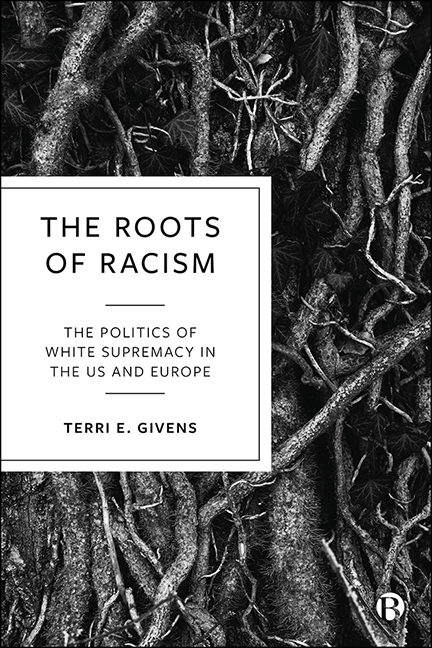Book contents
- Frontmatter
- Dedication
- Contents
- Preface
- 1 Introduction: Structural Racism is the Problem of the 21st Century
- 2 Political Science, International Relations, and the Normalization of White Supremacy
- 3 The Social and Geographical Construction of Race: A Transatlantic History
- 4 Ties that Bind: Slavery and Colonialism
- 5 Post-War Transitions: The Conflation of Immigration and Race
- 6 Immigration, Race, and Citizenship
- 7 From the Civil Rights Movement to Black Lives Matter
- 8 Party Politics, the Radical Right, and Race in the 21st Century
- 9 Elections, Protest, and Insurrection
- 10 Conclusion: Finding a Path Forward
- References
- Index
1 - Introduction: Structural Racism is the Problem of the 21st Century
Published online by Cambridge University Press: 15 September 2022
- Frontmatter
- Dedication
- Contents
- Preface
- 1 Introduction: Structural Racism is the Problem of the 21st Century
- 2 Political Science, International Relations, and the Normalization of White Supremacy
- 3 The Social and Geographical Construction of Race: A Transatlantic History
- 4 Ties that Bind: Slavery and Colonialism
- 5 Post-War Transitions: The Conflation of Immigration and Race
- 6 Immigration, Race, and Citizenship
- 7 From the Civil Rights Movement to Black Lives Matter
- 8 Party Politics, the Radical Right, and Race in the 21st Century
- 9 Elections, Protest, and Insurrection
- 10 Conclusion: Finding a Path Forward
- References
- Index
Summary
On Memorial Day, May 25, 2020, George Floyd's life slipped away as he said, “I can't breathe.” Derek Chauvin, a Minneapolis, Minnesota police officer knelt on his neck for 9 minutes and 29 seconds (Levenson, 2021). Floyd's crime was allegedly using a fake $20 bill at a convenience store. The video of his murder was shared millions of times on social media which allowed the world to see his life taken away. It would become a seminal moment with protests against police brutality and in support of the Black Lives Matter movement developing around the world. The demonstrations were historic in that they drew in not only Black protestors, but people from all backgrounds and nations.
The conviction of officer Chauvin almost a year later was a relief, but it also came with the recognition that there would be much more work to do to end anti-Black police brutality and discrimination in the post-Trump era. Voter suppression measures were on the ballot in many US states, and in the UK, a report commissioned by the Conservative government after the 2020 protests denied the existence of structural racism, flying in the face of evidence provided by many who had participated in the study (Cassidy and John, 2021).
In his seminal 1903 book, The Souls of Black Folk, W.E.B. DuBois states, “The problem of the Twentieth Century is the problem of the colorline”( p 3). Although much has changed since that time, as we enter the second decade of the 21st century structural racism remains an intractable problem, not only in the US, but in Europe. Norms around the idea of Whiteness are embedded in our societies. The groups who are the targets of racism and violence may be different in these countries, but the impact on equality is the same. Whether it's people of Muslim background, African descent, or newly arrived Asian immigrants, the norms around White supremacy and political power come into play. Ideas around race and ethnicity that developed hundreds of years ago still define our social and economic relations.
- Type
- Chapter
- Information
- The Roots of RacismThe Politics of White Supremacy in the US and Europe, pp. 1 - 15Publisher: Bristol University PressPrint publication year: 2022



